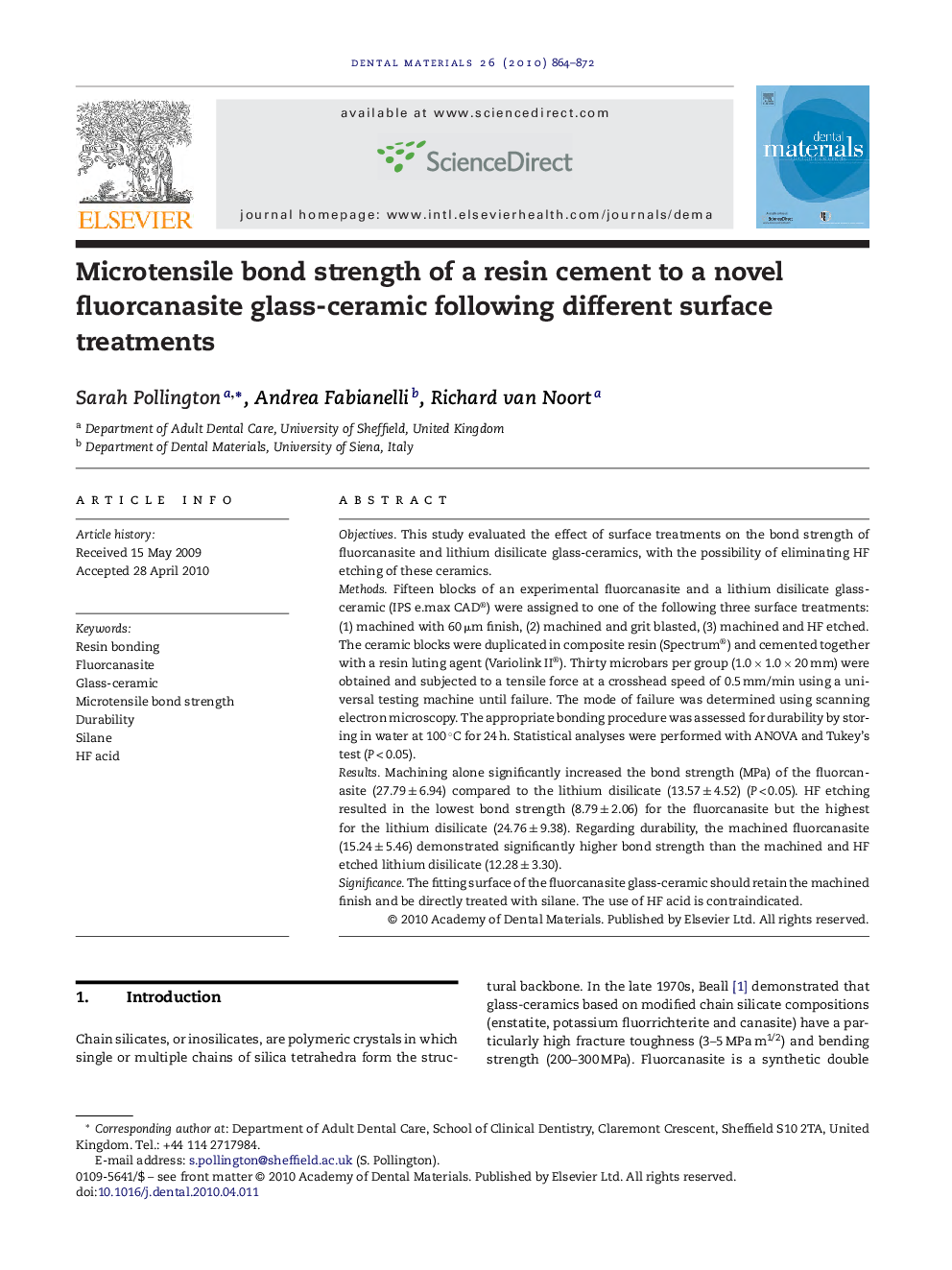| کد مقاله | کد نشریه | سال انتشار | مقاله انگلیسی | نسخه تمام متن |
|---|---|---|---|---|
| 1422084 | 986434 | 2010 | 9 صفحه PDF | دانلود رایگان |

ObjectivesThis study evaluated the effect of surface treatments on the bond strength of fluorcanasite and lithium disilicate glass-ceramics, with the possibility of eliminating HF etching of these ceramics.MethodsFifteen blocks of an experimental fluorcanasite and a lithium disilicate glass-ceramic (IPS e.max CAD®) were assigned to one of the following three surface treatments: (1) machined with 60 μm finish, (2) machined and grit blasted, (3) machined and HF etched. The ceramic blocks were duplicated in composite resin (Spectrum®) and cemented together with a resin luting agent (Variolink II®). Thirty microbars per group (1.0 × 1.0 × 20 mm) were obtained and subjected to a tensile force at a crosshead speed of 0.5 mm/min using a universal testing machine until failure. The mode of failure was determined using scanning electron microscopy. The appropriate bonding procedure was assessed for durability by storing in water at 100 °C for 24 h. Statistical analyses were performed with ANOVA and Tukey's test (P < 0.05).ResultsMachining alone significantly increased the bond strength (MPa) of the fluorcanasite (27.79 ± 6.94) compared to the lithium disilicate (13.57 ± 4.52) (P < 0.05). HF etching resulted in the lowest bond strength (8.79 ± 2.06) for the fluorcanasite but the highest for the lithium disilicate (24.76 ± 9.38). Regarding durability, the machined fluorcanasite (15.24 ± 5.46) demonstrated significantly higher bond strength than the machined and HF etched lithium disilicate (12.28 ± 3.30).SignificanceThe fitting surface of the fluorcanasite glass-ceramic should retain the machined finish and be directly treated with silane. The use of HF acid is contraindicated.
Journal: Dental Materials - Volume 26, Issue 9, September 2010, Pages 864–872